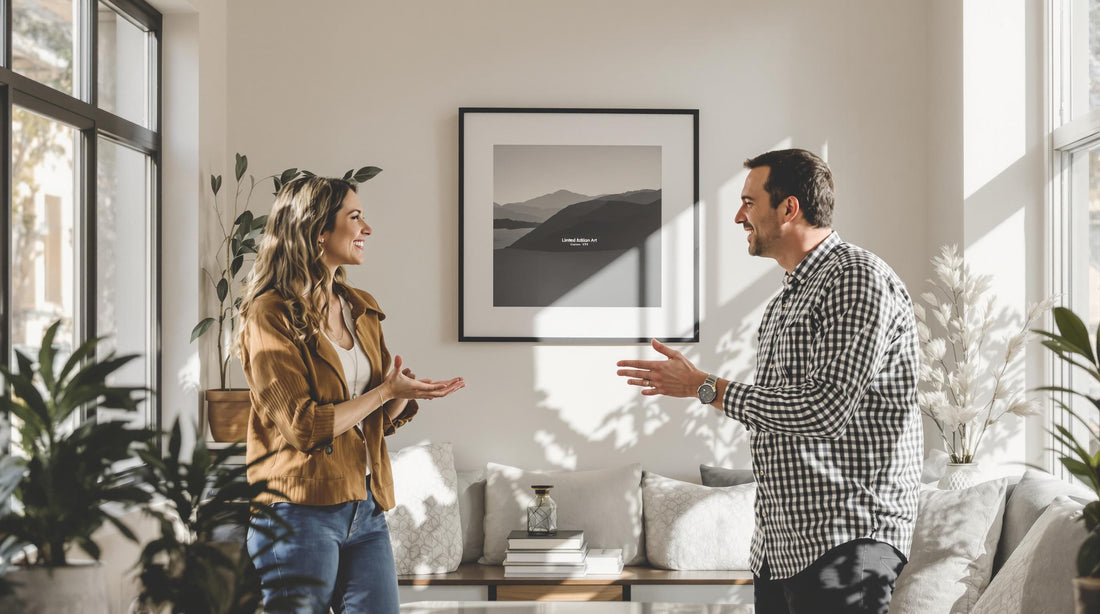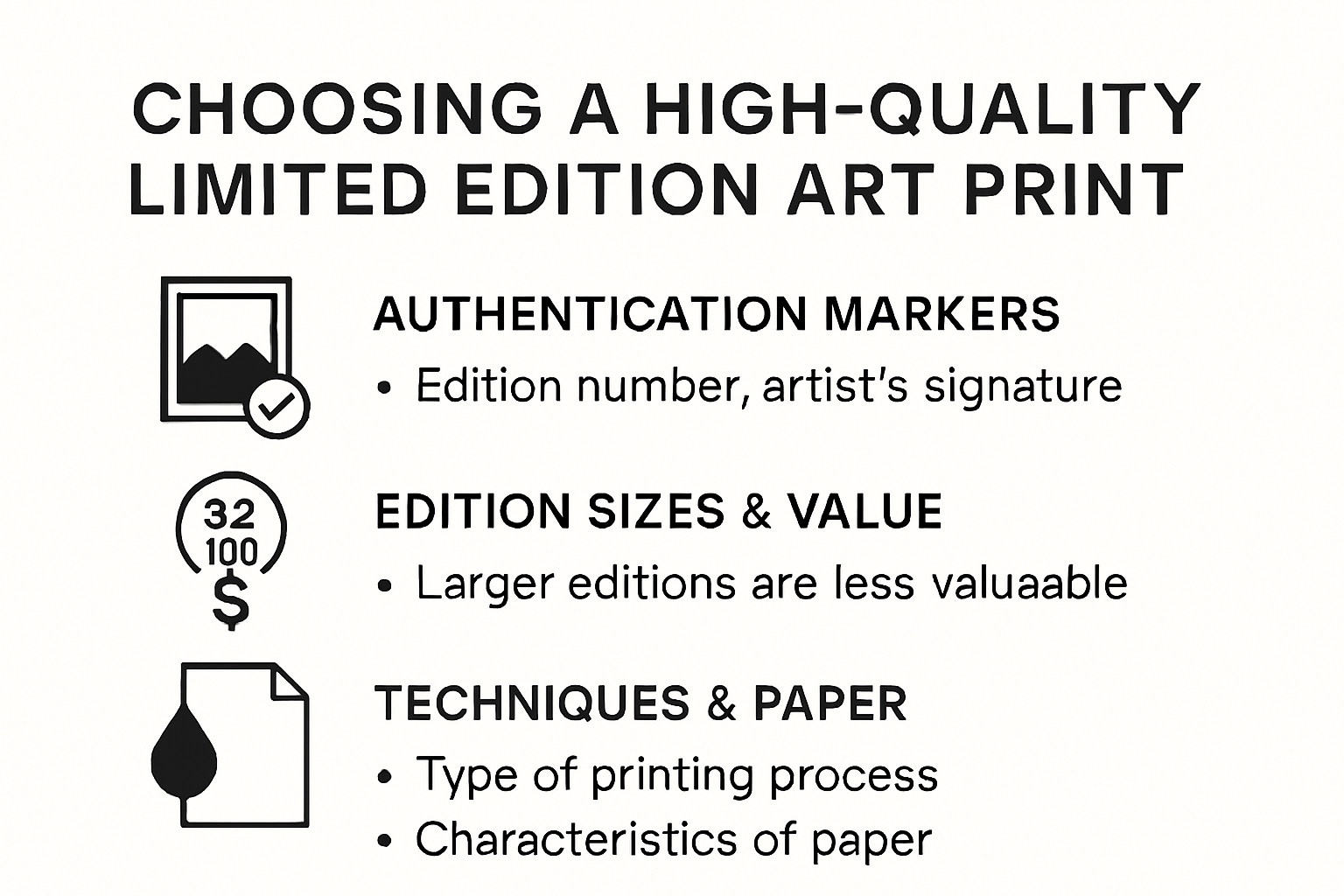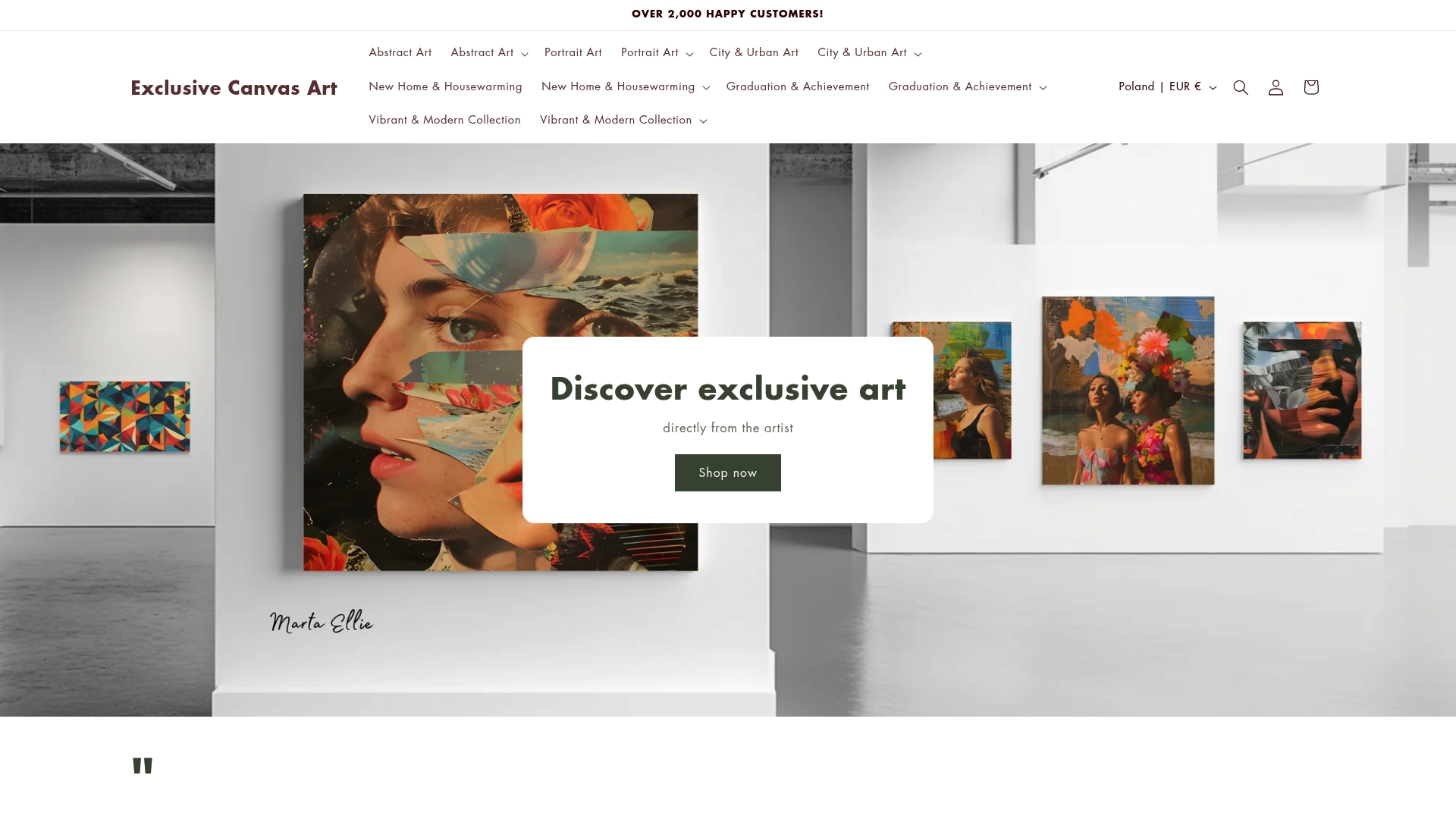
Limited Edition Art: Modern Prints for Collectors and Decorators 2025

Limited edition art prints are more than just wall decor and they are fast becoming prized possessions among collectors and home decorators alike. Here is something you might not expect. Less than 60 percent of art funding comes from traditional arts organizations which means your choice to buy a limited edition print can directly support independent artists in a real way. The real power of these prints is not just about owning something rare. It is about being part of a living artistic movement that shapes culture one piece at a time.
Table of Contents
- What Makes Limited Edition Art Unique
- How To Choose The Perfect Limited Edition Print
- Tips For Displaying Limited Edition Art In Your Space
- The Value Of Supporting Independent Artists
Quick Summary
| Takeaway | Explanation |
|---|---|
| Limited edition art is uniquely valuable. | These artworks are produced in restricted quantities, enhancing their desirability and investment potential for collectors. |
| Invest in authenticity and provenance. | Ensure that limited edition prints are numbered, signed, and come with a certificate of authenticity to secure their value. |
| Choose the right display techniques. | Proper lighting, strategic placement, and high-quality framing elevate the visual impact and longevity of your prints. |
| Support independent artists for cultural impact. | Purchasing limited edition art supports diverse voices and nurtures the creativity of individual artists, contributing to cultural innovation. |
| Connect personally with your art choices. | Select pieces that resonate with you emotionally, reflecting your personal taste and creating a storytelling medium in your space. |
What Makes Limited Edition Art Unique
Limited edition art represents a unique intersection of artistic creativity and collector value, offering discerning art enthusiasts a rare opportunity to own something truly extraordinary. Unlike mass-produced prints, these specialized artworks combine exclusivity, technical precision, and artistic integrity.
The Rarity Factor
The core appeal of limited edition art lies in its intentional scarcity. Discover our exclusive collection of carefully curated prints where each piece is produced in a predetermined, restricted number. According to the Metropolitan Museum of Art, this limitation is not just a marketing strategy but a deliberate artistic choice that enhances the artwork’s intrinsic value. Artists carefully control the total number of prints, typically numbering each piece and signing them to confirm authenticity.
This controlled production process means collectors are not just purchasing a reproduction but investing in a near-original artwork. Each print becomes a numbered piece of a finite collection, making it significantly more valuable than unlimited reproductions. The lower the total number of prints in an edition, the more desirable and potentially valuable the artwork becomes.
Technical Precision and Artistic Integrity
Unlike standard mass-market prints, limited edition art involves meticulous production techniques that preserve the nuanced details of the original artwork. Professional printmakers use sophisticated methods like giclée printing, which employs high-resolution digital technology and archival-quality inks to capture every subtle color gradient and textural element.
The printing process for limited edition art is a collaborative effort between the artist and master printmakers. Each print undergoes rigorous quality control, ensuring that color accuracy, paper quality, and overall presentation meet exacting standards. This commitment to technical excellence means that collectors receive an artwork that closely reflects the original piece’s visual and emotional impact.
Investment and Emotional Value
Beyond their aesthetic appeal, limited edition art prints represent a unique investment opportunity. Collectors appreciate these pieces not just as decorative objects but as potential appreciating assets. The controlled production, artist’s reputation, and the print’s individual characteristics all contribute to its potential future value.
Moreover, owning a limited edition print provides a personal connection to the artwork. Each piece tells a story of creative vision, technical mastery, and artistic expression. Collectors are not merely acquiring a decorative item but becoming part of a select group who appreciate and preserve the artist’s unique vision.
For art enthusiasts and interior decorators, limited edition art offers an unparalleled combination of exclusivity, quality, and emotional resonance. These prints transform living spaces, adding sophistication, personality, and a touch of artistic narrative that mass-produced decorations simply cannot match.
How to Choose the Perfect Limited Edition Print

Selecting the ideal limited edition print requires thoughtful consideration of multiple factors that extend beyond mere aesthetic appeal. The process involves understanding artistic nuance, technical quality, and personal connection to ensure you acquire a piece that resonates with your space and artistic sensibilities.
Authenticity and Provenance
Authenticity is the cornerstone of valuable limited edition art. Check out our curated collection for prime examples of genuine artwork. According to Artwork Archive, legitimate limited edition prints must be numbered, signed, and dated by the artist. The certificate of authenticity is crucial - it should include specific details such as the artist’s name, work title, edition number, medium, print size, and creation date.
When evaluating a print, look for these key authentication markers. A hand-signed signature from the artist adds significant value and confirms the print’s legitimacy. As Berkeley Editions explains, every print within a specific edition should be visually identical, with individual pieces differentiated only by their unique numbering.
Technical Quality and Preservation
The technical execution of a limited edition print determines its long-term value and visual impact. Professional printmakers utilize advanced techniques like giclée printing, which captures intricate details using high-resolution digital technology and archival-quality inks. These methods ensure color accuracy, preservation of subtle gradients, and resistance to fading.
Consider the print’s physical characteristics. High-quality paper, archival ink, and precise color reproduction are essential. The print should demonstrate exceptional clarity, with colors that remain true to the original artwork. Some collectors prefer prints created using traditional techniques like lithography or screen printing, which offer unique textural qualities and artistic authenticity.
Investment Potential and Personal Connection
Beyond aesthetic considerations, limited edition prints represent potential artistic investments. The edition’s size significantly influences its value - smaller editions typically command higher prices due to their rarity. According to expert sources, an edition of 5 prints will likely appreciate more substantially than an edition of 100 by the same artist.
However, investment potential should not overshadow personal emotional connection. The perfect limited edition print is one that speaks to you, complements your living space, and reflects your artistic taste. Consider how the artwork’s color palette, style, and subject matter interact with your existing decor. Some collectors prioritize works that challenge their perspective, while others seek pieces that create a sense of harmony and tranquility.
When choosing a limited edition print, balance technical excellence, authenticity, potential value, and personal resonance. Take time to research the artist, understand the print’s production process, and most importantly, select a piece that genuinely moves you. A truly exceptional limited edition print is more than a decorative object - it’s a storytelling medium that transforms your space and reflects your unique aesthetic sensibility.
To help you evaluate and compare the key factors when choosing a limited edition print, the following table summarizes the major considerations and their significance for collectors and decorators.
| Consideration | Why It Matters | What to Look For |
|---|---|---|
| Authenticity & Provenance | Ensures artwork is genuine, sustains value | Numbered, signed, dated, certificate of authenticity |
| Technical Quality | Impacts longevity and aesthetics | Archival inks/paper, high-res giclée, color/gradient quality |
| Edition Size | Rarity drives value and exclusivity | Lower numbers = greater scarcity (e.g. 5 vs 100 prints) |
| Personal Connection | Resonance with your taste and space | Emotional impact, style, fit with your decor |
| Investment Potential | Artwork’s ability to appreciate over time | Artist reputation, limited edition size, historical appreciation |
Tips for Displaying Limited Edition Art in Your Space
Displaying limited edition art transforms your living space from a mere room into a personal gallery that reflects your unique aesthetic and artistic appreciation. Strategic placement, thoughtful lighting, and careful consideration of environmental factors can elevate the impact of your art collection.
Strategic Placement and Composition
Explore our wall art placement guide to maximize your artwork’s visual potential. According to Absolute Museum & Gallery Products, creating a visually balanced display involves aligning artworks at a consistent center height, typically around 150 cm from the floor. This professional approach ensures a harmonious and intentional arrangement that draws the viewer’s eye naturally across the space.
Consider the architectural elements of your room when positioning limited edition prints. Large, statement pieces work beautifully as focal points above furniture like sofas or consoles, while smaller prints can create interesting gallery walls when grouped thoughtfully. The key is to create visual dialogue between the artwork and your existing decor, allowing each piece to complement the room’s overall aesthetic without overwhelming the space.
Lighting and Environmental Protection
Proper lighting is crucial for showcasing limited edition art while preserving its long-term quality. The Kansas State Collegian recommends using artificial lighting with UV filters or LED bulbs to prevent damage from harmful rays. Ceiling-mounted accent lights can create dramatic illumination that highlights the artwork’s intricate details and color nuances.
Environmental considerations are equally important. The Canadian Conservation Institute advises against hanging prints in areas exposed to direct sunlight, heat sources, or high-traffic zones. Avoid placing limited edition art near radiators, air vents, or fireplaces, which can cause temperature fluctuations and potential damage. Humidity and temperature stability are critical for preserving the print’s integrity and preventing color fading or paper degradation.
Framing and Preservation Techniques
The right framing can dramatically enhance a limited edition print’s aesthetic appeal and protective qualities. Choose archival-quality materials that shield the artwork from environmental damage. Museum-grade glass with UV protection offers an additional layer of preservation, preventing color degradation and protecting against dust and moisture.
Consider the frame as an extension of the artwork itself. While the frame should complement the print, it should not compete with or overshadow the piece. Neutral tones and simple designs often work best, allowing the artwork’s details to remain the focal point. Professional framers can provide custom solutions that both protect and elevate your limited edition print.
Displaying limited edition art is an art form in itself. It requires a delicate balance of aesthetic sensitivity, technical knowledge, and careful preservation. By thoughtfully considering placement, lighting, and protection, you transform your living space into a personal museum that celebrates artistic expression and your unique taste. Each carefully positioned print becomes more than a decoration - it’s a statement of your artistic identity, inviting conversation and inspiring those who experience it.
The following table outlines some key do’s and don’ts for displaying and preserving your limited edition art prints, making it easier to optimize both presentation and protection.
| Display & Preservation Tip | Do This | Avoid This |
|---|---|---|
| Wall Placement | Hang at eye level (~150 cm center from floor) | Too high/low, awkward groupings |
| Lighting | Use UV filters, LED bulbs, targeted accent lights | Direct sunlight, incandescent or halogen exposure |
| Environmental Hazards | Stabilize temperature/humidity, keep away from vents | Hanging near radiators, fireplaces, or bathrooms |
| Framing | Use archival materials, UV-protective glass | Standard glass, non-archival frames |
| Room Traffic | Place in calm, low-traffic areas for longevity | Busy hallways, areas prone to bumping |
The Value of Supporting Independent Artists
Supporting independent artists is more than a transaction - it’s a profound investment in creative diversity, cultural expression, and personal artistic innovation. By choosing to purchase limited edition art directly from emerging and established independent creators, collectors and art enthusiasts play a crucial role in sustaining a vibrant, dynamic artistic ecosystem.
Economic and Creative Empowerment
Explore our artist collections to directly contribute to individual artists’ creative journeys. According to Grantmakers in the Arts, supporting independent artists creates a powerful multiplier effect. Research reveals that nearly half of artists use grants to hire other artists as collaborators, demonstrating how individual support can generate broader economic opportunities within the artistic community.
The financial landscape for independent artists is complex and challenging. A study in the Proceedings of the National Academy of Sciences indicates that less than 60% of art funding comes from dedicated arts organizations. This statistic underscores the critical importance of direct support from collectors, enthusiasts, and art lovers who recognize the value of individual creative expression.
Cultural Diversity and Innovation
Independent artists represent the lifeblood of cultural innovation. They challenge established norms, experiment with new techniques, and offer perspectives that might otherwise remain unexplored. By purchasing limited edition prints from these creators, collectors become patrons of artistic risk-taking and creative exploration.
Each artwork represents more than a visual object - it’s a narrative, a personal statement, and a unique perspective on the world. Independent artists often bring marginalized stories, experimental techniques, and fresh aesthetic approaches that traditional art institutions might overlook. Supporting these creators means actively participating in a more inclusive, diverse artistic dialogue.
Personal Connection and Artistic Legacy

Purchasing limited edition art from independent artists creates a direct, meaningful connection between creator and collector. Unlike mass-produced artwork, these pieces carry the artist’s personal touch, signature, and unique creative vision. Digital platforms and modern art markets have made it easier than ever to discover and support emerging talents.
Research on digital art markets, such as a study examining NFT economics, suggests that modern platforms can provide artists with ongoing income streams through innovative royalty mechanisms. This evolution in art commerce allows collectors to support artists not just through initial purchases but through continuous engagement and appreciation.
Supporting independent artists is a transformative act of cultural participation. It goes beyond aesthetic appreciation to become a statement of values - valuing creativity, individual expression, and the intrinsic worth of artistic innovation. When you choose a limited edition print from an independent artist, you’re not just decorating a space. You’re helping to nurture a creative ecosystem, amplify diverse voices, and ensure that unique artistic visions continue to flourish and inspire.
Every artwork tells a story. Every purchase writes a new chapter in an artist’s journey. By supporting independent creators, you become part of that narrative - a crucial protagonist in the ongoing story of artistic creation and cultural expression.
Frequently Asked Questions
What is limited edition art?
Limited edition art refers to artworks that are produced in a controlled number, enhancing their rarity and value for collectors.
How do I verify the authenticity of a limited edition print?
To verify authenticity, ensure the print is numbered, signed by the artist, and comes with a certificate of authenticity detailing the artist’s name, work title, and edition number.
Why should I invest in limited edition art?
Investing in limited edition art can provide not only aesthetic pleasure but also potential financial appreciation, as these pieces often increase in value over time.
How should I display limited edition art in my home?
For optimal display, hang limited edition art at eye level, use proper lighting to avoid damage, and protect it from environmental hazards like moisture and direct sunlight.
Find Your Signature Piece: Limited Editions for True Collectors
Are you searching for limited edition art that is both rare and meaningful? If you have struggled to find authentic prints with true value or felt overwhelmed by mass-produced decor, you are not alone. The article highlighted how scarcity and provenance matter in today’s art market, and how the right piece can define your space and investment. Marta Ellie’s Limited Edition Art Collection – Exclusive Canvas Art was built for collectors and decorators who want original, signed, and truly unique pieces. Each canvas is a carefully curated work designed to preserve both artistic integrity and long-term worth.

Start your collection today and experience the difference that genuine limited editions can make in your home. Explore the full collection at Marta Ellie’s site and discover detailed images, artist stories, and secure ordering. New editions are released regularly, but they do sell out. Secure a piece that captures your story and elevates your décor before these exclusive artworks are gone.
Recommended
- Contemporary vs Modern Art: Guide for Collectors & Decorators 2025 – Exclusive Canvas Art
- Types of Art Prints: Your Guide for Collectors and Decorators 2025 – Exclusive Canvas Art
- Moving Day Celebration Art Under $400 – Exclusive Canvas Art
- Contemporary Art Influences: Trends Designers Love in 2025 – Exclusive Canvas Art